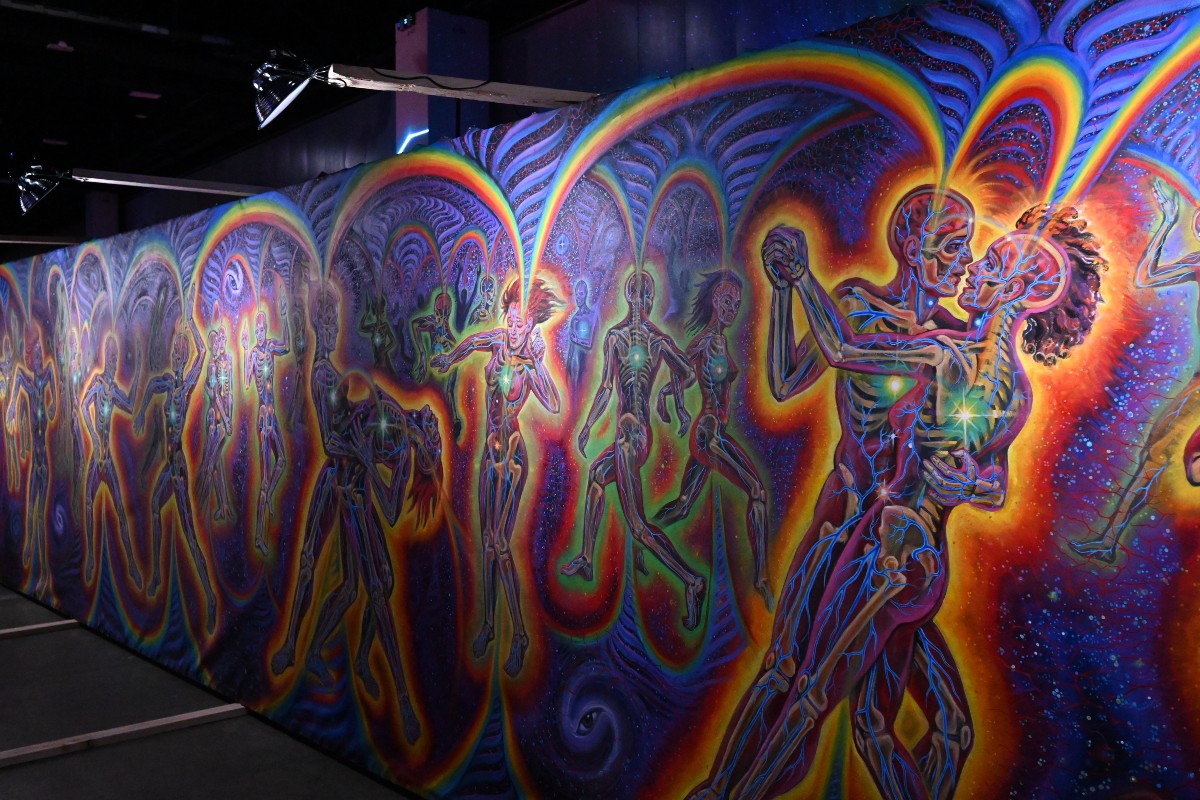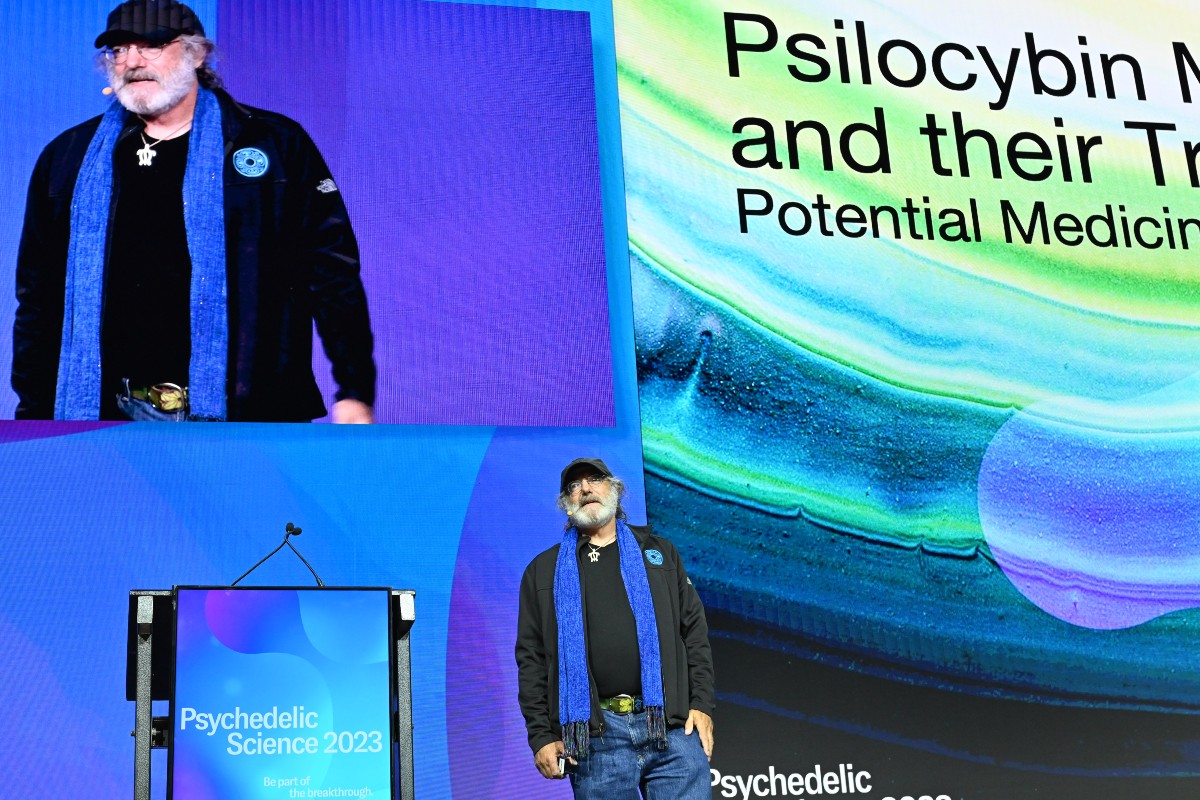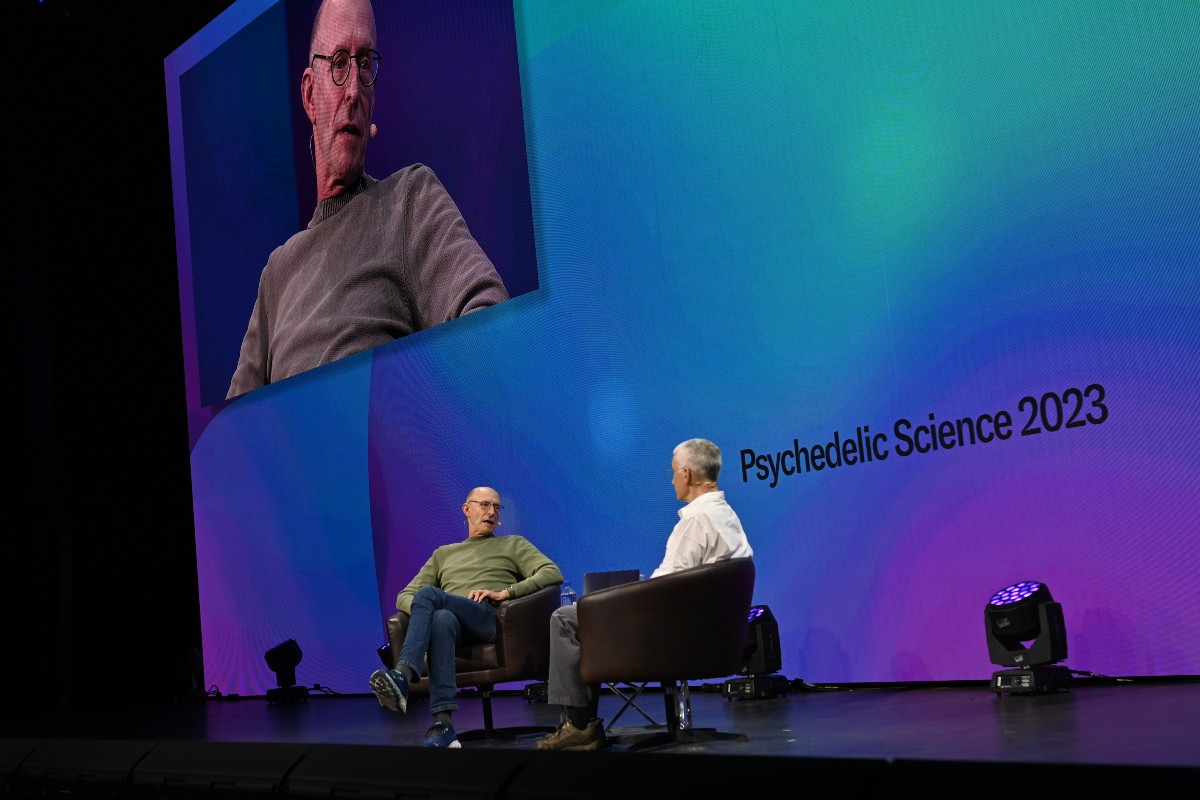A few weeks ago, Denver hosted the largest psychedelic conference in history, bringing some 12,000 people together for Psychedelic Sciences 2023. Organized by the Multidisciplinary Association for Psychedelic Studies (MAPS), the event gathered researchers, policy experts, activists, artists, doctors, investors, entrepreneurs, psychedelic therapy practitioners, and journalists (like myself) to discuss how the psychedelic field has evolved and where it’s heading as the possibility of legalization becomes increasingly real.
Over the course of a week, the conference touched on all aspects of the movement, from research to policy advocacy, criminal justice considerations to indigenous concerns, and a wide range of other matters. It was attended by a slew of prominent psychedelic figures, such as Michael Pollan, Paul Stamets, Carl Hart, Amanda Fielding, Richard Miller, the founders of Erowid, and too many more to list.
Now that the conference is over and I’ve had a chance to process the whole thing, let’s take a look at a few key things we learned about the state of psychedelics.

The psychedelic movement is really, really big…
While the psychedelic movement has grown noticeably in recent years, few realized how big it has swelled until the Psychedelic Sciences event. It’s hard to envision what 12,000 people look like, but let me put it this way: downtown Denver was completely overrun by people wearing event badges. Every night there were parties and concerts associated with the conference that were completely packed, and hotel lobbies all over town were full of attendees at all hours of the day. And these weren’t just a bunch of drugged-up weirdos (though they were there too), but respected scientists and notable politicians – even the highly conservative ex-Texas governor Rick Perry.
All of this made plain how large the movement has become. While there have been large vaguely psychedelic events in the past — mostly music festivals — this was the largest conference by a long shot to ever focus solely on the substances. And it’s only going to continue to grow.

…But there is much dissension about how it should move forward
While the overall vibe of the conference was fairly upbeat — there was a palpable feeling in the air that everyone was there to accomplish something — that is not to say that there was not also dissension among the psychedelic ranks. I spoke with many widely varying attendees who voiced concerns over the course of the week, which ultimately climaxed with a disruptive protest during the closing speech.
There were a few key points of divergence. Perhaps the most oft-uttered was concern over the commercialization of psychedelics (we’ll go into this in greater detail below). Others expressed how the over-clinicalization of psychedelics (i.e. channeling the experience entirely into a therapeutic, clinical context), worrying that something would be lost from the culture if it becomes overly sterile and medical. And others still — the most high profile of which was Michael Pollan — are urging that the movement temper the promise of psychedelics, reducing the “cure-all” talk that has become increasingly common, and being more open about the risks and potential dead-ends in terms of benefits that are anecdotal rather than research-based.
The loudest protest, however, was a literal protest. Indigenous activists have long argued that control over and perhaps even the use of certain psychedelics — particularly peyote (of which there is a dwindling supply due to over-consumption), ayahuasca, and in some cases psilocybin — should be ceded to indigenous peoples who have been using them for ages. Or at the very least, it was often suggested, the mainstream psychedelic movement would be smart to heed indigenous wisdom on the matter, instead of leaning into the aforementioned commercialization and clinicalization.
This erupted into a protest in the closing hours of the conference. During his closing speech, Rick Doblin — the founder of MAPS and quite possibly the most important figure in the contemporary psychedelic movement — was interrupted by a small group of indigenous protesters. After some back and forth, he invited them to come onstage and speak their minds. Their central concerns involved points I mentioned above, with one citing the terrible consequences that followed the commercialization of ancient indigenous medicines like tobacco and opium, warning that perhaps psychedelics would turn out the same way within a few decades.
Among the wider conference attendees, opinions on these points varied. One thing that is certain, however, is that regardless of one’s view, there is certainly not a consensus within the movement about the future of psychedelics.

Federal legal reform is highly promising…
One of the most commonly discussed topics at the conference involved the state of federal policy. Talks on everything from current efforts and successes, to criminal justice reform, to impending obstacles were proffered, and while it is generally agreed that there are challenges yet to come, the overall picture is promising.
Recent research on the potential therapeutic benefits of psilocybin and MDMA, for example, have spurred the FDA to assign them “Fasttrack” and “Breakthrough Treatment” status, which opens up funding and research to determine their efficacy at treating conditions like depression, PTSD, and anxiety, essentially clearing the path for legalization in some capacity — likely in a therapeutic context to start before opening for recreational use, following a trend similar to cannabis.
In fact, just the other day congressional lawmakers proposed legislation that would reschedule MDMA (in other words, change its illegal status to at least a little more legal) and provide funds to research on its potential applications as a treatment for PTSD. At the same time, Australia went ahead and legalized MDMA and psilocybin for use in therapy. All of these are signs that we could be enjoying legal mushrooms and MDMA sooner rather than later.
And as I mentioned earlier, Rick Perry was one of the keynote speakers at the conference. This has major implications for the future of psychedelic policy, as he is a staunch conservative who once opposed all such legalization efforts. When he began learning more about the latest research, however — particularly in relation to veterans being treated for PTSD and depression — his attitude changed. This is an important shift. For decades, conservative politicians have led the prohibition charge. But those attitudes are changing fast.

…But state efforts face many challenges
In lieu of federal legalization, many cities and states have been taking action on a smaller scale.
Colorado, for example, has decriminalized the possession, gifting, and use of psychedelics like psilocybin, DMT, ibogaine, peyote, and ayahuasca. Oregon has decriminalized psilocybin and legalized its use under clinical supervision. At the same time, a number of cities have decriminalized or legalized psychedelic use in various capacities (with Oakland notably enacting broad decriminalization measures), and many states are currently taking steps toward similar legislation.
State and local efforts, however, face some fairly major challenges, largely because of the lack of federal collusion. Psychedelic businesses don’t have access to banking, and practitioners and users face legal consequences on federal levels. This is very similar to the growing pains that the emerging cannabis industry has largely begun to overcome. As several legal and industry experts I spoke with noted, this is an entirely new market and legal space that is going to stumble as it gets off the ground.

There’s plenty of positive research…
Psychedelics have managed to break into the mainstream largely thanks to the past 25 years of promising, sometimes dazzling research on potential benefits. This has all been thoroughly documented and reported on (including by me for the Manual), so we won’t rehash it all again. But there were many studies shared at Psychedelic Sciences, and one, in particular, jumped out at me.
In a recent study from Johns Hopkins, it was found that psychedelics can open “critical periods” during which users are more receptive to learning new behaviors. This is important because previous developmental research has shown that animals typically have fairly specific “critical periods” (during childhood or adolescence, for example) that, once closed, are unlikely to reopen.
This in itself is interesting but perhaps not unexpected. The neuroplastic effects of psychedelics, by which they allow the brain to create new neural pathways, are already well known. This ties into the opening of “critical periods.” What is more novel, however, is that these researchers found that the length of a psychedelic experience can translate into a relative learning period. So longer-lasting psychedelics like LSD, ayahuasca, or ibogaine open critical periods that are much longer than briefer ketamine or psilocybin trips. This has major implications for how different substances can be leveraged for different therapeutic or learning purposes.

…But it’s not all in yet
While there was exciting new research revealed, something that was discussed by many is the fact that many of the anecdotal effects of psychedelics that are often vocally advocated by proponents have yet to offer a scientific basis.
Microdosing – the act of taking non-psychoactive doses of psilocybin or LSD for various benefits – is the most notorious example. While many in the tech and therapy spaces swear by it, there is very little evidence that it actually delivers the purported benefits, such as improved mood or great creativity. Accordingly, many of the more moderate voices in the movement are urging that more research is needed before microdosing is taken seriously.

The commercial element is already in place…
There were hundreds of psychedelic-related products and brands on display in the Psychedelic Sciences exhibition center, touting everything from non-psychedelic mushroom supplements to techy non-drug-based psychedelic tools to (typically under the table) new psychedelic drugs and ingestion methods.
All of this made it abundantly clear that there is very much an active psychedelic commercial industry waiting in the wings, so to speak, for legalization to open up the market. Much like cannabis, this poses major opportunities for entrepreneurs looking to capitalize on a new space.

…But many have concerns about over-commercialization
In this case, however, one person’s opportunity is another’s concern. Many of the old heads within the movement expressed their worry about how the psychedelic culture will change as commercialization ramps up. As one of the founders of the renowned drug information website Erowid told me, it’s clear that what had once been an activist movement is increasingly becoming a commercial movement. And as one psychedelic therapy practitioner told me with an air of disapproval, he’d spoken with more people about the business of psychedelics than the benefits of the drugs themselves.
Personally, this (along with over-clinicalization) is among my greatest concerns about where psychedelics are headed.
In terms of commercialization and the massive amount of venture capital money pouring into the space, to a certain degree, I get it. It takes money to make major policy change and create an entirely new cultural field, and those involved need to make a living. It’s a capitalized world and nothing is free.
I worry, however, about what will happen to psychedelics once they’re under the thumb of Wall Street. Will they become yet another tool of Big Pharma and Big Business? As the indigenous protesters suggested, this did not work out so well for opium, tobacco, and even chocolate. In a capitalized psychedelic space, they who have the most money have the most power, and most psychedelic advocates hope to democratize psychedelics, not just place them under the control of a wealthy few.
An extension of this is over-clinicalization. For many, psychedelics are a cultural experience. In recent years, however, it has been trending toward becoming a prescription-based experience. Rather than entering into it as something that you’ve come across through education and niche cultural avenues, it’s increasingly becoming something that will be prescribed as a generic cure-all. What was once woodsy and weird is becoming sterile. And this was, to a large degree, exactly what the indigenous protesters are opposing: the commodification of an ancient medicine (and recreation) that humans have been using since long before history began documenting such things.
In the end, Psychedelic Sciences 2023 proved that the movement is gaining traction, but it also posed some important questions about its future. Where will we go from here? I’ll let you know after Psychedelic Sciences 2024.



